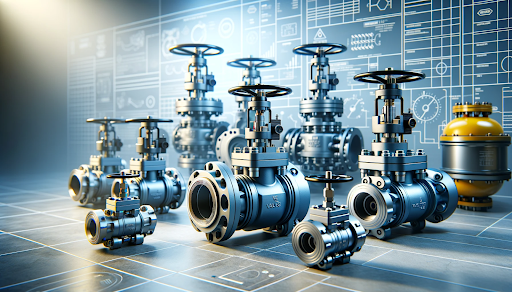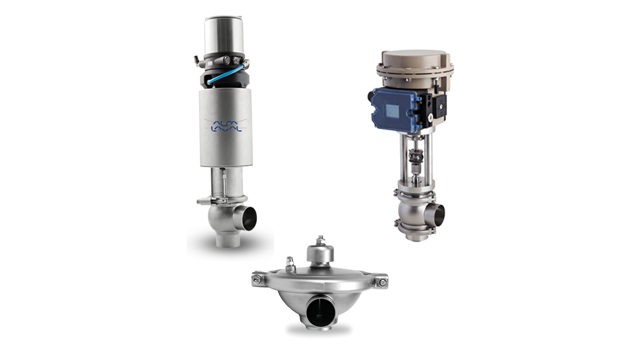The Function of Control Valves in Liquid Circulation Management Systems
The Function of Control Valves in Liquid Circulation Management Systems
Blog Article

Maximize Power Financial Savings and Convenience With Advanced Structure Automation Controls
In the realm of contemporary architecture and center management, the combination of sophisticated building automation manages stands as a pivotal development. By utilizing the power of automation, structures can adapt, respond, and evolve in ways that were when unbelievable.
Energy Efficiency Benefits
Power effectiveness advantages can significantly minimize power consumption and operational costs in structures. Energy-efficient systems, such as innovative structure automation controls, can optimize the use of sources like air conditioning, lights, and heating, leading to lower power costs over time.
Furthermore, boosted energy effectiveness can lengthen the life expectancy of building equipment and systems. By running more effectively, heating and cooling systems, lighting fixtures, and other structure elements experience much less damage, resulting in decreased upkeep and replacement prices. In addition, energy-efficient structures often regulate greater residential or commercial property values and rental rates, providing long-lasting financial benefits to proprietors.
Moreover, power effectiveness can improve owner convenience and efficiency. Correctly managed interior atmospheres with optimal lights and thermal conditions develop an even more conducive and positive work area, leading to enhanced staff member fulfillment and performance. On the whole, the energy performance advantages related to innovative structure automation controls are multifaceted, encompassing cost savings, ecological stewardship, and owner wellness.
Boosted Comfort Control
Enhancing convenience control in structure settings needs an innovative integration of innovative automation systems for optimal owner health. By utilizing advanced building automation controls, centers can customize the interior setting to meet the particular needs and preferences of occupants. These systems make it possible for precise regulation of air flow, lights, and temperature level, creating a productive and comfortable atmosphere. Owner satisfaction and performance are carefully connected to thermal convenience, making it crucial to have systems in location that can adapt to changing conditions in real-time.
By including these sophisticated controls, buildings can not only boost comfort yet also boost power effectiveness by optimizing system procedures based on actual tenancy and usage patterns. Inevitably, focusing on resident convenience via sophisticated automation systems leads to a more satisfying and much healthier indoor setting.
Operational Performance Improvements

Moreover, the application of real-time monitoring and analytics devices makes it possible for building operators to recognize power inefficiencies and operational anomalies immediately. By constantly checking energy use patterns and system efficiency metrics, adjustments can be made in real-time to enhance power usage and make certain peak functional performance. control valves. Additionally, incorporating demand response methods right into building automation controls can additionally improve operational efficiency by dynamically readjusting power usage based upon grid problems and pricing signals
Indoor Climate Optimization
Efficient indoor climate optimization is a basic element of building automation controls, making sure passengers' convenience and health while maximizing power cost savings. By using sophisticated sensing units and controls, constructing automation systems can continually readjust and keep track of temperature, humidity degrees, air top quality, and air flow to develop an ideal indoor atmosphere. Keeping consistent and comfy problems not just boosts owner satisfaction however also increases productivity and general wellness.
Indoor environment optimization additionally plays a critical role in power efficiency. By this hyperlink fine-tuning air conditioning, home heating, and ventilation systems based on real-time data and occupancy patterns, constructing automation controls can dramatically lower energy consumption - control valves. Implementing strategies such as demand-controlled ventilation and thermal zoning can help minimize energy waste while making certain that each location of the building gets the required conditioning.

Lasting Atmosphere Development
Structure automation controls not only maximize indoor climate conditions for energy effectiveness and passenger convenience however likewise lay the foundation for producing a lasting atmosphere via strategic administration of systems and resources. By integrating innovative building automation technologies, such as sensing units, actuators, and intelligent software, facilities can keep an eye on and adjust energy use in real-time to lessen waste and decrease their carbon footprint. These systems make it possible for predictive upkeep, determining prospective issues prior to they escalate and optimizing devices efficiency to enhance durability and effectiveness.
Moreover, sustainable atmosphere development prolongs beyond energy administration to include water preservation, waste reduction, and interior air top quality renovation. Building automation controls can manage water use, find leaks, and make sure proper garbage disposal methods, adding to general sustainability efforts. In addition, by keeping an eye on and controlling air flow and purification systems, these technologies improve passenger wellness and productivity while decreasing power consumption connected with a/c operations.
Conclusion
To conclude, advanced structure automation regulates offer significant advantages in terms of energy savings, convenience control, operational effectiveness, indoor environment optimization, and producing a sustainable atmosphere. By implementing these controls, structures can accomplish ideal efficiency while lowering energy consumption and enhancing passenger convenience. It appears that using sophisticated automation modern technology is important in enhancing building efficiency and creating an extra lasting future.
Power performance benefits can considerably lower energy usage and operational prices in structures. On the whole, the power efficiency benefits connected with advanced building automation controls are complex, encompassing expense financial savings, ecological stewardship, and passenger well-being.
In addition, integrating demand reaction methods into building automation controls can even more boost functional effectiveness by dynamically readjusting energy use based on grid problems and rates my blog signals.
Structure automation regulates not only enhance interior environment problems for power effectiveness and owner convenience however likewise lay the foundation for producing a lasting atmosphere with critical monitoring of sources and systems.In verdict, advanced structure automation manages deal considerable advantages in terms of energy financial savings, comfort control, functional efficiency, interior environment optimization, and important link developing a lasting atmosphere.
Report this page